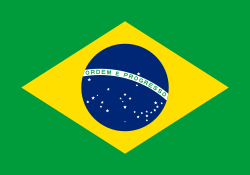Rymdsond



Rymdsond, sond, är en obemannad rymdfarkost som ofta styrs från en kontrollstation på jorden och som samlar in information som används i forskning eller av vetenskapsmän för att bevisa olika teser inom exempelvis astronomi eller fysik.
Olika sonder
Rymdsonder delas in i tre underkategorier - interplanetära sonder, interstellära sonder eller satelliter, vilket är följeslagare, till olika himlaobjekt.
Interplanetära sonder
Interplanetära sonder är sonder som skickas mellan olika planeter eller andra himlaobjekt inom solsystemet. Den första interplanetariska sonden var Luna 1 som sändes upp av Sovjetunionen 2 januari 1959 mot månen.
Luna 1 missade månen med 5000 km och har sedan hamnat i bana runt solen. Den första sonden att nå månen var Luna 2 som skickades upp 12 september 1959. Luna 2 kraschade på månens yta och kunde därför inte ge några som helst tekniska data från månen. Luna 9 som sändes upp 31 januari 1966 blev det första av människor tillverkade föremålet att mjuklanda på månen och sända tekniska data från sonden tillbaka till jorden. Landningen med Luna 9 skedde 3 februari.
Den första landningen på en annan planet gjordes på Venus den 15 december 1970 med sonden Venera 7 som sköts upp av Sovjetunionen 17 augusti 1970.
USA och NASA sände upp marssonderna Viking 1 och Viking 2 från Cape Canaveral 20 augusti respektive 9 september 1975. De gjorde varsin mjuklandning på Mars yta 20 juli respektive 3 september 1976.
Voyager 1 och Voyager 2 som sköts upp av NASA 5 september respektive 20 augusti 1977, se nedan under Interstellära sonder, undersökte på sin väg ut i rymden på avstånd bland annat Jupiter och Saturnus. Voyager 2 undersökte också Neptunus och Uranus.
Den 18 oktober 1989 sändes rymdsonden Galileo upp för att gå in i omloppsbana runt Jupiter. Dit kom den i juli 1995.
NASA sände upp sonden Cassini-Huygens den 15 oktober 1997. Den gick in i omloppsbana runt Saturnus den 1 juli 2004.
Pluto, som för övrigt inte är en planet, utan en dvärgplanet (det beslöts den 23 augusti 2006 av Internationella Astronomiska Rådet, efter en långvarig tvist), passerades av en rymdsond. Det är sonden New Horizons som sköts upp 2006 (medan Pluto var en planet) och som passerade Pluto 2015.
Interstellära sonder
Interstellära sonder är sonder som skickas ut i den interstellära rymden vilket är utanför vårt eget solsystem. Till dags dato är det bara 4 existerande sonder som har skickats ut ur vårt solsystem: Pioneer 10 och Pioneer 11 som sändes ut i rymden 3 mars 1972 respektive 6 april 1973 samt Voyager 1 och Voyager 2 som sändes ut i rymden 1977. Voyager-sonderna har sedan 2000 sänt tillbaka värdefull information om Heliopausen som är den yttersta gränsen för hur långt ut solen har påverkan i rymden.
Satelliter
Det som vi idag är mest bekant med när det gäller rymdsonder är de satelliter som ligger i bana runt jorden. Satelliter runt jorden kallas allmänt för jordsatelliter. Ordet satellit betyder följeslagare. Det ryska ordet för följeslagare är Sputnik. Jordsatelliterna har många olika användningsområden som jordresurssatelliter, fjärranalyssatelliter, navigeringssatelliter, spionsatelliter, rymdteleskop, kommunikationssatelliter, vädersatelliter, etc. Satelliter finns i dag också runt månen och Mars.
Se även
Externa länkar
 Wikimedia Commons har media som rör Rymdsond.
Wikimedia Commons har media som rör Rymdsond.
Media som används på denna webbplats
MAVEN at Mars, Artist's Concept. This artist's concept depicts NASA's Mars Atmosphere and Volatile EvolutioN (MAVEN) spacecraft near Mars. MAVEN is in development for launch in 2013 and will be the first mission devoted to understanding the Martian upper atmosphere. The mission's principal investigator is Bruce Jakosky from the Laboratory for Atmospheric and Space Physics at the University of Colorado.
The goal of MAVEN is to determine the role that loss of atmospheric gas to space played in changing the Martian climate through time. MAVEN will determine how much of the Martian atmosphere has been lost over time by measuring the current rate of escape to space and gathering enough information about the relevant processes to allow extrapolation backward in time.
NASA Goddard Space Flight Center in Greenbelt, Md. manages the project and will also build some of the instruments for the mission. In addition to the principal investigator coming from CU-LASP, the university will provide science operations, build instruments, and lead education/public outreach. Lockheed Martin of Littleton, Colo., is building the spacecraft and will perform mission operations. The University of California-Berkeley Space Sciences Laboratory is also building instruments for the mission. NASA's Jet Propulsion Laboratory, Pasadena, Calif., will provide navigation support, the Deep Space Network, and the Electra telecommunications relay hardware and operations.
For more information about MAVEN, visit www.nasa.gov/maven.The Flag of Europe is the flag and emblem of the European Union (EU) and Council of Europe (CoE). It consists of a circle of 12 golden (yellow) stars on a blue background. It was created in 1955 by the CoE and adopted by the EU, then the European Communities, in the 1980s.
The CoE and EU are distinct in membership and nature. The CoE is a 47-member international organisation dealing with human rights and rule of law, while the EU is a quasi-federal union of 27 states focused on economic integration and political cooperation. Today, the flag is mostly associated with the latter.
It was the intention of the CoE that the flag should come to represent Europe as a whole, and since its adoption the membership of the CoE covers nearly the entire continent. This is why the EU adopted the same flag. The flag has been used to represent Europe in sporting events and as a pro-democracy banner outside the Union.bendera Indonesia
Flag of Iran. The tricolor flag was introduced in 1906, but after the Islamic Revolution of 1979 the Arabic words 'Allahu akbar' ('God is great'), written in the Kufic script of the Qur'an and repeated 22 times, were added to the red and green strips where they border the white central strip and in the middle is the emblem of Iran (which is a stylized Persian alphabet of the Arabic word Allah ("God")).
The official ISIRI standard (translation at FotW) gives two slightly different methods of construction for the flag: a compass-and-straightedge construction used for File:Flag of Iran (official).svg, and a "simplified" construction sheet with rational numbers used for this file.
Flag of Israel. Shows a Magen David (“Shield of David”) between two stripes. The Shield of David is a traditional Jewish symbol. The stripes symbolize a Jewish prayer shawl (tallit).
A joint ESA and NASA mission, Ulysses (named after the hero of Greek legend) has charted the reaches of space above and below the poles of the Sun for more than seventeen years. It provided the first-ever map of the heliosphere – the sphere of influence of the Sun – in the four dimensions of space and time.
Exploring our star's environment is vital if scientists are to build a complete picture of the Sun, how it works and its effect on the Solar System. In particular, the satellite studied the solar wind that blows non-stop from the Sun and carves out the heliosphere itself, which extends well beyond the outer limits of the Solar System.
Ulysses was equipped with a comprehensive range of scientific instruments to detect and measure solar wind ions and electrons, magnetic fields, energetic particles, cosmic rays, natural radio and plasma waves, cosmic dust, neutral interstellar gas, solar X-rays and cosmic Gamma Ray Bursts.
Ulysses was launched by Space Shuttle Discovery in October 1990. It headed out to Jupiter, arriving in February 1992 for the gravity-assist manoeuvre that swung the craft into its unique solar orbit. It orbited the Sun three times and performed six polar passes. The mission concludes on 1 July 2008.Spacecraft that are on trajectories to leave the Solar System.



























